By Madeline Bocaro
https://linktr.ee/conceptualbooks
© Madeline Bocaro, 2017. No part of this site may be reproduced or re-blogged in whole or in part in any manner without permission of the copyright owner.
This is an excerpt from my Yoko Ono biography…

An all-embracing look at Yoko Ono’s life and work, in stunning detail.
Read all about the book, see the reviews and
Order here:
Yoko had originally written Cut Piece as a conceptual score in 1962 with options (either spontaneous or circumstantial), in the same respect as John Cage’s infamous “4′ 33” score. Cut Piece eventually became a recurring live event, performed by Yoko herself, and by others.
Cut Piece (first version for single performer):
Performer sits on stage with a pair of scissors in front of him. It is announced that members of the audience may come on stage – one at a time – to cut a small piece of the performer’s clothing to take with them. Performer remains motionless throughout the piece. Piece ends at the performer’s option.
Cut Piece (Grapefruit)
Performer sits on stage with a pair of scissors placed in front of her and asking the audience to come up on the stage, one by one, and cut a portion of her clothing (anywhere they like) and take it. The performer, however, does not have to be a woman.
Yoko reverses the role of the artist projecting his or her vision. Cut Piece allows the audience their own interpretation via participation – to physically take a piece from the work – essentially the cloak of the artist – who is completely unmasked and vulnerable.
“…the author’s ego is contained in traditional works. It means to thrust ego upon the audience.
I have always wanted to produce work without such ego by standing at a spiritual state of perfect selflessness…
My feelings were, to not thrust the thing I chose upon others, and no matter what it is, please take away the part you like, and please take the part you like with you by cutting it off. “
– y.o. – Tada no Atashi (Just Me!) 1986
For each performance of Cut Piece, Yoko sacrificed her best clothing. On one occasion she wore a dress from London’s famous Biba boutique. Wearing good clothing elevated the importance of the work.
“In those days, I didn’t have many clothes, and I made sure to I pick the one I loved.
– Yoko Ono, Twitter
The Maysles brothers captured Yoko’s March 1965 Carnegie Recital Hall performance of Cut Piece on film. Yoko sits in the polite Japanese position (seiza, which is assumed in formal settings), with her legs folded beneath her. One by one, audience members gingerly approach the stage. At the start, the scissors are ritualistically laid out on the floor, glistening in the dim light like a Samurai sword in front of the kneeling, sacrificial artist. The stage is set; artist, viewers and a dangerous sharp object. Anything can happen. The first person picks up the scissor and selects a preferred part of Yoko’s clothing to snip. The scissors are taken by the next person, and the unmasking continues as the audience performs the strip tease. There is nervousness, titillation and giggling.
Yoko has the opposing perspective. Blades come moving toward her, dangerously close to her face. Which garment will be cut away next? There goes the bra strap. She sees it from the utmost center.
“The audience was quiet and still, and I felt that everyone was holding their breath. While I was doing it, I was staring into space. I felt kind of like I was praying. I also felt that I was willingly sacrificing myself.”
Yoko looks uneasy, yet determined and prepared to take whatever comes, knowing that she is giving her all. The art becomes (inter)action. The unpredictability of events is nerve wracking. – the situation could become potentially aggressive or violent. But in most instances, things proceed calmly (except during the first performance in Kyoto, when a man raised the scissors in threat, but then calmly cut a piece of Yoko’s dress). The artist, the clothing and the scissors are props for the audience’s performance.
“Instead of giving the audience what the artist chooses to give, the artist gives what the audience chooses to take. That is to say, you cut and take whatever part you want; that was my feeling about its purpose. I went onto the stage wearing the best suit I had. To think that it would be OK to use the cheapest clothes because it was going to be cut anyway would be wrong; it’s against my intentions. I was poor at the time, and it was hard. This event I repeated in several different places, and my wardrobe got smaller and smaller. However, when I sat on stage in front of the audience, I felt that this was my genuine contribution. This is how I really felt.” – y.o. Just Me! 1974
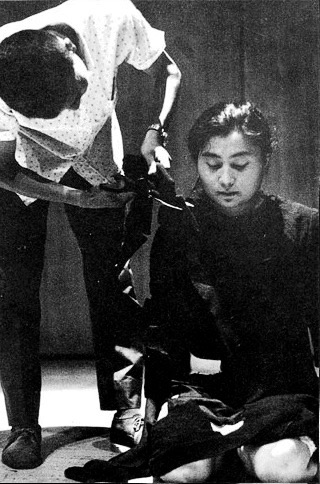 The ultimate inspiration for Cut Piece was a famous story told to Yoko as a child about the selflessness of Buddha.
The ultimate inspiration for Cut Piece was a famous story told to Yoko as a child about the selflessness of Buddha.
In 1967, Yoko stated in a London article, “…It was a kind of criticism against artists, who are always giving what they want to give. I wanted people to take whatever they wanted to, so it was very important to say you can cut wherever you want to. It is a form of giving that has a lot to do with Buddhism. There’s a small allegorical story about Buddha. He left his castle with his wife and children and was walking towards a mountain to go into meditation. As he was walking along, a man said that he wanted Buddha’s children because he wanted to sell them or something. So Buddha gave him his children. Then someone said he wanted Buddha’s wife and he gave him his wife. Someone calls that he is cold, so Buddha gives him his clothes. Finally a tiger comes along and says he wants to eat him and Buddha lets the tiger eat him. And in the moment the tiger eats him, it became enlightened or something. That’s a form of total giving as opposed to reasonable giving like “logically you deserve this” or “I think this is good, therefore I am giving this to you.”
“Cut piece was ritualistic and ceremonial.
Nuns understood it because they are used to giving.
All of us have energy but not all of us give it. It’s easy to change the world.”
– Yoko, November 2014 Lecture at Paley Center
Yoko told Robert Enright in 1994 that at the time, “I didn’t have any notion of feminism.” but later accepted the feminist associations about Cut Piece that she had not originally intended. She became a radical feminist soon after. Ono’s 1970 film Fly, was more of a feminist statement.
Yoko had also applied the idea of cutting to film…
FILM SCRIPT 3
Ask audience to cut the part of the image on the screen that they don’t like.
Supply scissors
– from SIX FILM SCRIPTS BY YOKO ONO, Tokyo, June 1964
The catalog for Stone (a multimedia collaboration at Judson Church Gallery, New York with John Hendricks and other artists) included Yoko’s summary of Cut Piece.
“People went on cutting the parts they do not like of me.
Finally there was only the stone remained of me that was in me
but they were still not satisfied and wanted to know what it’s like in the stone.”
– Yoko, March 1966

“Anything could have happened – I wouldn’t do that now. At the time, I had this feeling – that I still hold – that art perceives everything. When I was on stage, I would never think in terms of, ‘Is it going to be dangerous for me?’. When I was on a stage, I always felt I was confronting gods and goddesses within the audience – that within them were gods and goddesses.”
– Yoko, Seconds Magazine – 1995, Issue No. 36
Performance artist Charlotte Moorman performed Yoko’s Cut Piece hundreds of times. Charlotte made a gift to Yoko of all the scraps of all the pieces of fabric that had been cut away during her many performances of Cut Piece over the years.
“ …A hundred years from now, it’s Yoko Ono the world is going to remember.
Not John Lennon or the Beatles.”
– Charlotte Moorman, 1989
- See Charlotte performing Cut Piece in 1989– with a hug from Yoko
@ 20:00 in the film clip below:
After Charlotte’s passing, Nam June Paik made a documentary film, Topless Cellist(1995).
Watch here: (29:00)
https://www.youtube.com/watch?v=2aeH9FdtAqY
In 1992, Yoko performed her own work, Promise Piece at the Whitney Museum in a memorial tribute to Charlotte.
Charlotte Moorman – Cut Piece @ NYU 1967 /
Charlotte Moorman’s “Cut Piece” performances installed in ‘A Feast of Astonishments’
The amazing performance artist Echo Morgan performed Cut Piece at the opening of Yoko’s exhibition Peace Is Power on April 3, 2019 in Leipzig Germany.
See my chat with Echo Morgan all about her Cut Piece performance here:
* Wallace Berman and William Burroughs appear on the The Beatles’ Sgt. Pepper’s Lonely Hearts Club Band album cover.
© Madeline Bocaro 2017. No part of this text may be copied, photocopied, reproduced, translated or reduced to any electronic medium or machine-readable form, in whole or in part, without prior written consent. Reproduction in any form without permission is prohibited. All text contained on this site are protected by United States copyright law and may not be reproduced, distributed, transmitted, displayed, published or broadcast without the prior written permission of Madeline Bocaro.
madelinex.com is a non-profit blog created for educational and research purposes.
Any content that may violate copyright or free usage laws will be removed immediately upon request.
This is an excerpt from my book…
In Your Mind – The Infinite Universe of Yoko Ono
An all-embracing look at Yoko Ono’s life, music and art – in stunning detail.
Read all about it, see the reviews and
Order here:
HARD COVER books are only available at…
Conceptual Books
https://linktr.ee/conceptualbooks
Contact: conceptualbooks@icloud.com
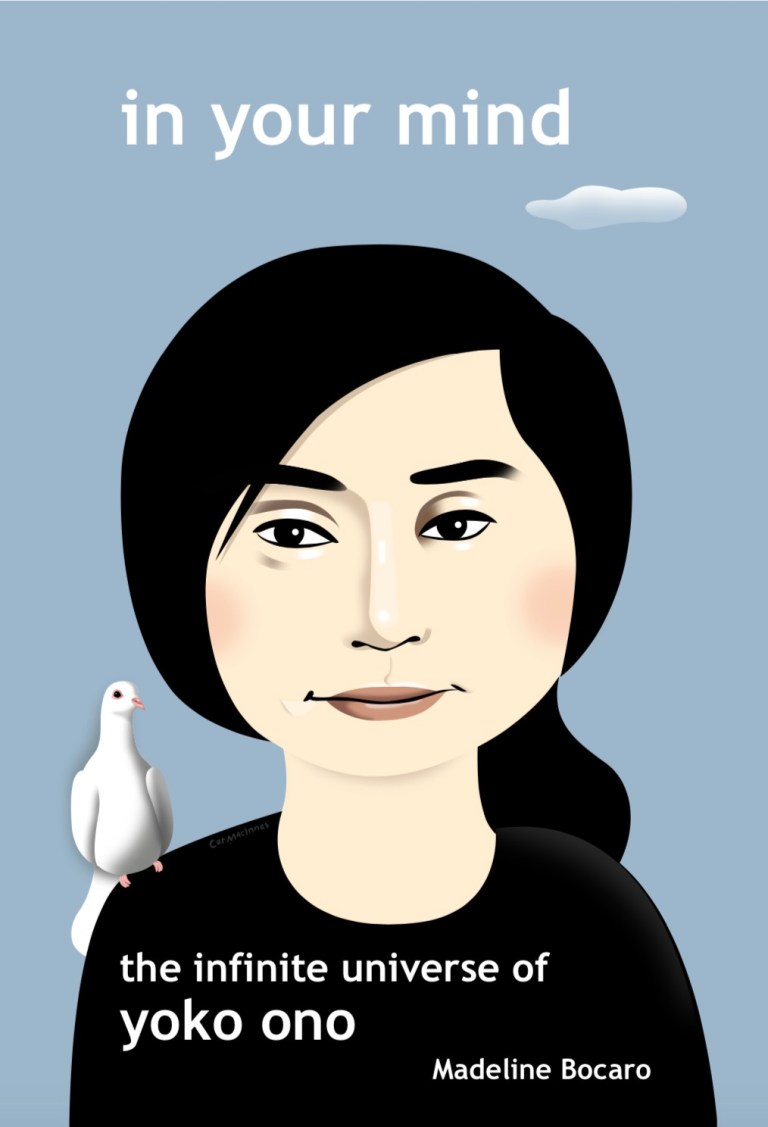
Cut Piece Performances by Yoko Ono:
July 20, 1964 Kyoto, Yamaichi Concert Hall with Anthony Cox
August 11, 1964 Tokyo, Sogetsu Art Center – Strip-Tease Show
March 1965 New York City, Carnegie Recital Hall – New Works of Yoko Ono
Sept. 28 & 29, 1966 London, Africa Center – DIAS presents Two Evenings with Yoko Ono
September 2003 Paris*, Ranelagh Theater (performed by Yoko at age 70)
“Against ageism, against racism, against sexism and against violence.”
*For the Paris performance, Yoko wore a designer dress by John Galliano.
“She is bold, brave, a pirate of people’s preconceived perceptions, and a role model for artistic anarchy. I will even forgive her if she cut up one of my designs in the name of art.:
– John Galliano – Vogue, 1997

Notable Re-Enactments:
September 1966 – 4th Avant Garde Art Festival organized by Charlotte Moorman, New York, Central Park – performed by two men. + various subsequent performances by Charlotte Moorman
April 1967 – London, Alexandria Palace performed by model Carol Mann. (Directed as
part of the 14-Hour Technicolor Dream Extravaganza)
Fall 1968 – London, Judson Gallery by John Hendricks
2012 – Waco, TX, by Baylor University Art & Theater students
2013 London, Meltdown Festival (curated by Yoko Ono) – by Peaches
April 3, 2019 – Yoko Ono: Peace Is Power exhibition, Leipzig Germany
by Echo Morgan (Xie Rong)
See my interview with the artist about her performance:
Another story (about the Cut Piece cloth fragments)
Read Here:
Fragments of cloth, lost and found: Remnants of Yoko Ono’s Cut Piece.
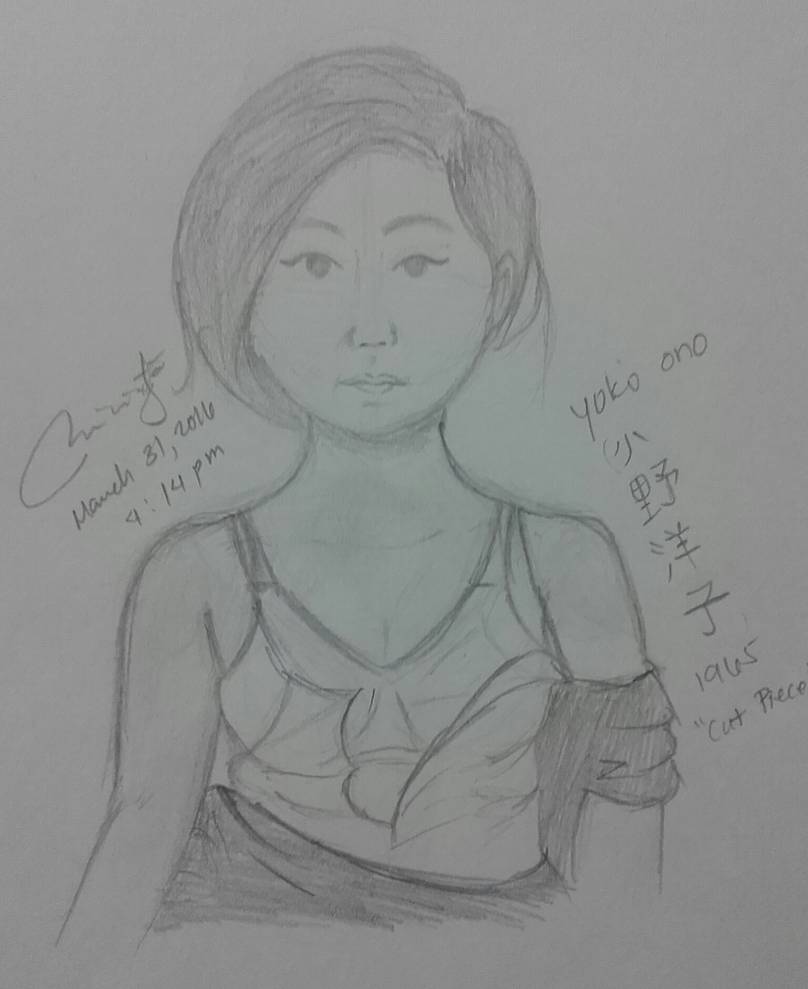

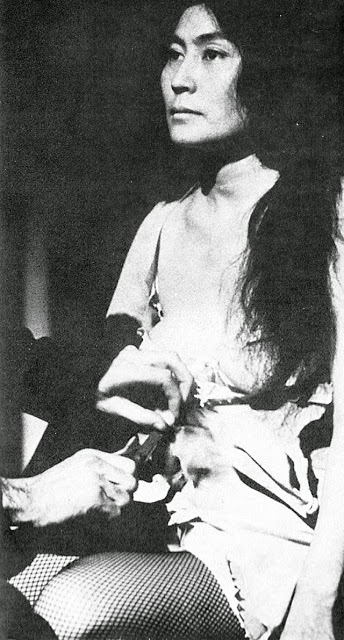



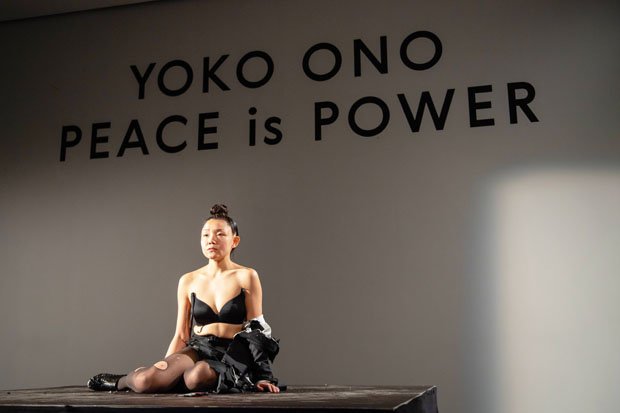

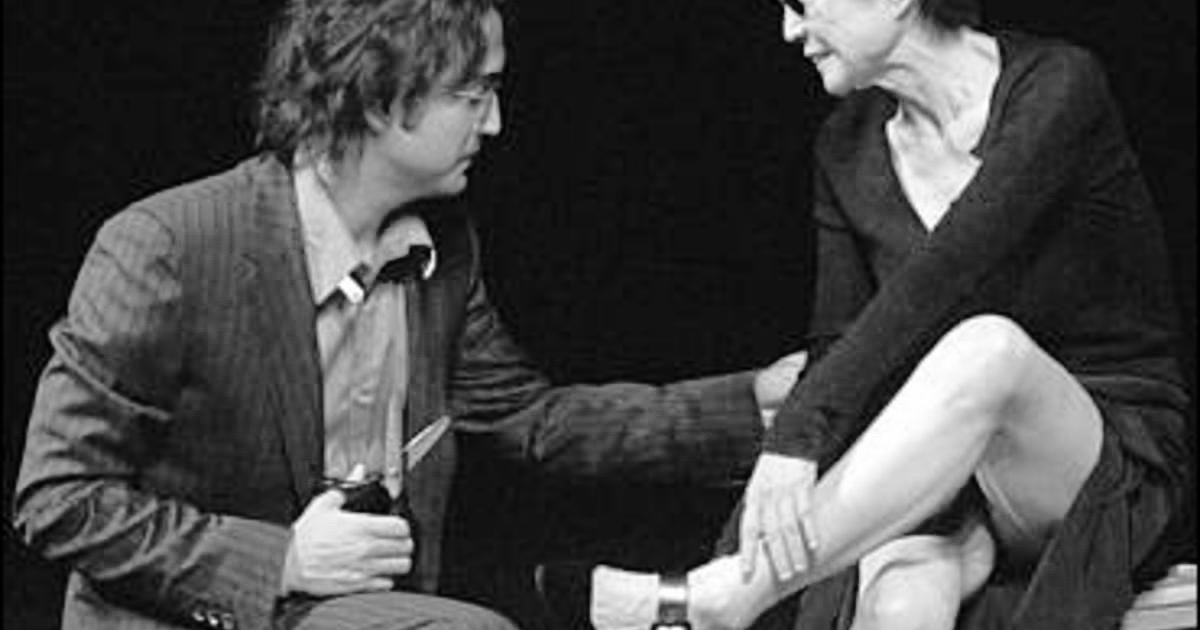

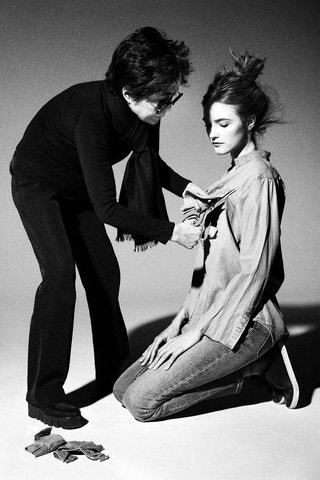

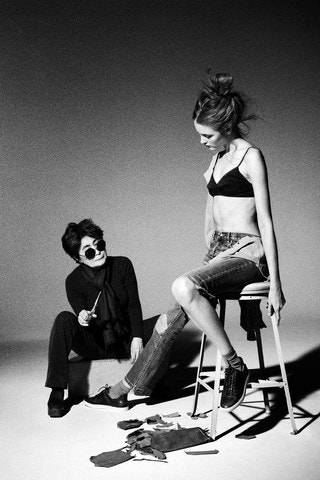
4 thoughts on “YOKO ONO – CUT PIECE”